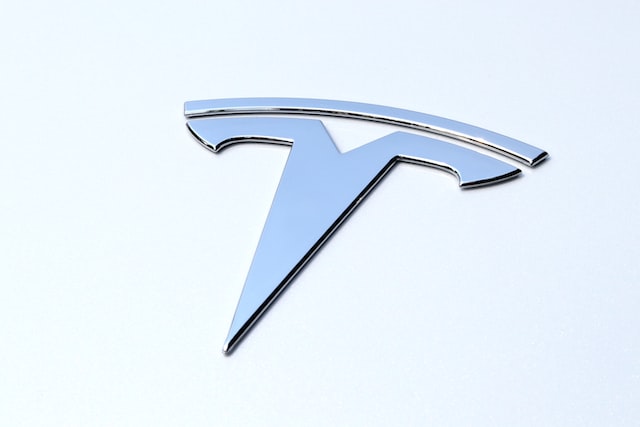
Martech is innovating in leaps and bounds, yet attribution remains a thorn in the side of the vast majority of marketers, including CMOs. Nielsen data shows that only a quarter of marketers are currently confident that they can quantify ROI, which explains why 70% of CMOs expect to invest more in marketing analytics and attribution in the coming year.
Marketers are feeling the pressure, with data complexity and fragmentation no longer bothering them all the time, as the sheer scale of MarTech makes it more important than ever to accurately calculate ROI per campaign, channel and technology. Incredibly, a 2018 Nielsen report for CMOs found that "on average, there are 59 different MarTech point solutions per marketing group, many of which are not integrated."
The traditional linear funnel is no longer valid; today, the customer journey can have dozens or even hundreds of touchpoints. Forget about omnichannel omnidomain, things like cross-screen devices, web and location, etc., these are obsolete and brands will be everywhere in the future. All these MarTech tools enable marketers to be in front of customers at anytime, anywhere they are searching (and with more personalized content than ever before). Yet despite this, tracking and measuring results is still difficult.
"The issue of accurate attribution is the biggest problem we face as marketers. Digital metrics are thought to be our savior, but have led to more confusion." says Simon Bell, Professor of Marketing and Director of the Centre for Workplace Leadership at the University of Melbourne.
So before marketers rush out to buy another MarTech tool, think hard about what the value of the MarTech tools already in place really is.
Attribution that goes beyond first and last clicks
First click attribution gives all the credit to the first action taken by the customer, and last contact is attributed to the last. Neither approach takes into account the multiple touch points and engagement in the customer's journey.

In an advance copy of a new report on advanced attribution tools, Technology Business Research writes: "Marketers who still use the "last contact" attribution model in their marketing campaigns are likely to give credit to media partners who do not provide value to media partners who do not provide value."
Ideally, first and last clicks are not an attribution model option at all; rather, they are metrics within a healthier, holistic attribution model. In Chief Marketer's recent B2B prospecting survey, the cost to convert a user was cited as the most important metric in attribution, followed by time to conversion, channel, first click and last click.
How can marketers go beyond the details and stand a little taller to see the big picture accurately so they can properly measure the ROI of your marketing and media spend?
Linear Attribution
Linear attribution is a multi-touch attribution model that gives each touchpoint an equal share of weight in the path to purchase. It allows analysis of campaigns and explains the role of multiple interactions, but when all channels are considered equally important, marketers lose the ability to optimise for specific channels.

For linear attribution, each touchpoint is given the same weight. If you have identified social media, email, direct mail, natural search and paid search, etc. all marketing methods that perhaps have some role in the customer's journey, each receiving the same 20% weighting percentage, then in reality, this can seriously underestimate the impact of conversions from your emails and artificially inflate the value of social media.
Time decay or U-shaped attribution
These two methods use time to measure the value of an interaction. Time-decay attribution has less of an impact on early touchpoints. As customers get closer to conversion, the value of each interaction increases.
On the other hand, in U-shaped attribution, the first and last touchpoints are the most heavily weighted, with the rest having an equal share of the smaller weight shares. For example, Google Analytics assigns 40% of the value to the first and last touchpoints. All others share 20% of the weight between the two.
The problem with time-based attribution models is that these assumptions are really just guesses about what motivates consumers to be most interested. While each touchpoint receives at least some acknowledgement, the share of weight for each touchpoint can be seriously distorted by this broad allocation of value. Should social media advertising as a first contact be given the same weight as the email that drove the customer to buy?
Algorithmic attribution
Algorithmic attribution is driven by data, not by assumptions or pre-determined rules. The model uses machine learning to build on the analysis and learning from previous marketing campaigns. Each touchpoint is analyzed and the attribution model evolves and becomes 'smarter' as a result.

This is the basis for Google Attribution, which was launched in 2017. Marketers can capture a snapshot of ad contributions using data from Google Analytics and Google Ads, and then layer it using machine learning. Through a number of early case studies, Google imported the analytics into Google Ads and used them in an automated bidding strategy. The result was that the test hotel brands saw a 45% increase in revenue from generic search campaigns and a 22% increase in ROAS revenue from generic search campaigns, as well as an increase in overall omni-channel revenue.
Customised attribution
Marketers looking for more sophisticated strategies may choose to design their own custom attribution models, ideally incorporating the machine learning elements discussed above. This allows marketers to better leverage their knowledge of the customer journey.
For example, a cruise line operating a high-value luxury experience is likely to know that their customers have a longer, more complex path to purchase. Marketers may choose to allocate a higher share of weight to early touchpoints, as customers will spend more time with the brands they have chosen, using content to help prepare them for the experience.
Or, you may have a higher customer value and a terrific repeat business. In this case, new customer acquisition and retention will naturally be of greater value too.
What can we do?
Whichever model you choose, make the most of it by continually honing and evolving it. Attribution is not a 'set it and forget it' calculation; it is a living, breathing understanding of the customer relationship that will grow and change over time. Here are some ways to make attribution more successful.
Develop more advanced modelling: Work towards completing a model that learns and adapts to the customer's needs as they evolve. Use machine learning.
Find the right people to support MarTech: CMOS must be supported by a group of data-savvy strategic marketers and analysts who can interpret the results and activate the data.
Be more sales friendly: Companies that work closely with their sales and marketing departments have 36% and 38% higher customer retention and sales respectively. Marketers need to understand which content and activities are driving the best results and can drive sales. Who better to ask this question than salespeople themselves?
Measuring success based on business outcomes: CMOS needs to be able to communicate complex data results to other members of the C-suite (e.g. CEO, CFO, etc.) in a compelling, understandable and relevant way. Channel-specific metrics may be an important way to input data, but may not resonate with decision makers. In fact, a March 2018 poll by Viand found that 36% of US CFOs and CMOs cited vanity metrics as a digital marketing concern and, more importantly, 22% of respondents said that a lack of focus on specific outcomes such as sales was another concern. Supported investment is vital, but executives may be reluctant to support digital technology, especially those who may be negatively impacted by its success. The key issue, however, is that the impact on business outcomes is very clear.
That's why marketers now need to look more deeply and carefully at the issue of attribution. The leaders of the future are the ones who have to put the technology, people and processes in place today to more accurately measure performance and attribute success in performance to the right channels and activities. It's not easy, but it has to be done now.

















